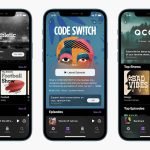Introduction.
With the world moving toward more digital solutions, it’s no surprise that the iPhone has evolved to support the eSIM technology.
But if you’re not sure what an eSIM is, or if your current iPhone supports it, you’re not alone. It’s easy to get lost in the jargon and tech lingo, especially when things seem to be changing constantly.
So, what’s the deal with eSIM? Let’s break it down.
What is eSIM?
An eSIM is short for “embedded SIM,” which means it’s a digital SIM that’s built directly into your device.
This is different from the physical SIM card we’ve all been using for years, which you can pop in and out of your phone.
The idea behind eSIM is to make things simpler. Instead of needing a physical card, your phone can connect to your carrier’s network via a digital connection.
This technology has some neat advantages. For one, you can store multiple carrier profiles on the same eSIM, which makes switching between networks easier.
Plus, you don’t have to worry about losing or damaging a tiny SIM card when you’re travelling or switching phones.
As more people opt for dual-SIM support and global roaming, the adoption of eSIM technology has gained traction. But with all these changes, it’s natural to wonder: which iPhones are eSIM compatible?
Why Should You Care About eSIM?
Let’s face it: we all want to make life simpler. So why should you care about eSIM? Well, for one, it can help you manage your mobile carrier services better.
Imagine travelling abroad and easily switching to a local network, without needing to go out and get a new SIM card. Or using one phone for both work and personal numbers, all on the same device.
For those who frequently travel, eSIM makes managing international numbers and services a lot smoother.
You don’t need to keep track of multiple physical SIM cards, and if you lose one, you don’t need to worry about replacing it immediately.
Then there’s the fact that many modern iPhones have eSIM capabilities built-in, which means if you’re on an older model, it might be time to upgrade if you want to use this feature.
Which iPhones Are eSIM Compatible?
Alright, let’s get to the real question you’re probably here for. If you’re looking to see if your iPhone supports eSIM, here’s the breakdown.
iPhone XS and Later
Apple first introduced eSIM technology with the iPhone XS, iPhone XS Max, and iPhone XR, all of which supported eSIM. From that point on, newer iPhones have come equipped with this feature. Here’s the list of iPhone models that support eSIM:
- iPhone XS
- iPhone XS Max
- iPhone XR
- iPhone 11
- iPhone 11 Pro
- iPhone 11 Pro Max
- iPhone SE (2nd generation)
- iPhone 12 mini
- iPhone 12
- iPhone 12 Pro
- iPhone 12 Pro Max
- iPhone 13 mini
- iPhone 13
- iPhone 13 Pro
- iPhone 13 Pro Max
- iPhone SE (3rd generation)
- iPhone 14
- iPhone 14 Plus
- iPhone 14 Pro
- iPhone 14 Pro Max
- iPhone 15
- iPhone 15 Plus
- iPhone 15 Pro
- iPhone 15 Pro Max
As you can see, almost all the newer iPhones from the XS onward have eSIM compatibility, so if you have one of these models, you’re good to go.
If you’re unsure which iPhone you have, you can check it in the Settings > General > About section of your phone.
Dual SIM with eSIM
Most recent iPhones also offer dual SIM functionality, meaning you can use both a physical SIM card and an eSIM on the same device at the same time.
This is particularly useful if you want to have one phone number for work and another for personal use.
Plus, dual SIM capability can be handy when travelling abroad, as you can keep your home SIM active while using a local carrier via eSIM.
For iPhones that support dual SIM, the process to activate eSIM is pretty simple. You’ll typically need to scan a QR code provided by your carrier or manually input the settings, and you’ll be set up in no time.
Do I Need to Get an eSIM Plan?
Yes, to use eSIM, you need to make sure your mobile carrier supports it. While most major carriers across the world have started supporting eSIM technology, it’s always a good idea to confirm with your carrier whether they offer eSIM services for your iPhone model.
Some popular carriers that support eSIM include:
- Verizon
- T-Mobile
- AT&T
- Sprint
- Vodafone
- EE (in the UK)
- Telstra (in Australia)
Many of these carriers let you activate your eSIM either online or by calling customer service, and in some cases, you can even get it activated instantly through their apps.
If you’re switching carriers, the process should also be fairly seamless—just make sure to check with them about their eSIM options.
Benefits of eSIM
There are several reasons why you might want to use eSIM technology:
- No Physical SIM Card: This means no more worries about losing or damaging a tiny physical SIM card. Your phone stays sleek and simple without any removable parts.
- Easy Carrier Switching: If you travel often or need to switch between carriers, eSIM makes this process easier. You can quickly switch between carrier profiles on your phone without needing to pop out a SIM card.
- Dual SIM Functionality: With eSIM, you can manage two phone numbers at once, without having to carry two phones. This is especially great for people who travel internationally or need to keep personal and work lines separate.
- Better for the Environment: Since eSIM doesn’t require a physical card, it’s a more eco-friendly option. No plastic, no need for packaging, and no transportation waste.
How Do I Set Up eSIM on My iPhone?
Setting up eSIM on your iPhone is straightforward, especially if your carrier supports it. Here’s a general overview of the process:
- Contact Your Carrier: Make sure your carrier supports eSIM and ask for the QR code or activation details.
- Go to Settings: Open the Settings app on your iPhone, and tap Cellular or Mobile Data.
- Add Cellular Plan: Tap Add Cellular Plan and scan the QR code your carrier provided. Alternatively, you can enter the details manually if needed.
- Follow Instructions: Your phone will guide you through the rest of the setup process, and you’ll be ready to use your eSIM in no time.
FAQs
Can I use eSIM on my iPhone if I travel internationally?
Yes, eSIM makes international travel a breeze! You can easily switch to a local carrier while keeping your home number active. You don’t need to worry about getting a new SIM card when you travel.
Can I use eSIM and a physical SIM card at the same time?
Yes, if you have a dual SIM-enabled iPhone (like the iPhone XS and later), you can use both an eSIM and a physical SIM card simultaneously. This is perfect for people who want to keep work and personal numbers separate or need a local SIM while traveling.
Is eSIM available for all iPhones?
No, eSIM was first introduced with the iPhone XS and later models. Older iPhones, like the iPhone 8 and iPhone X, don’t support eSIM.
Final Thoughts
eSIM is changing the way we think about SIM cards, offering convenience, flexibility, and ease of use.
As we’ve seen, iPhones starting from the XS all support this technology, and the process for setting it up is straightforward.
If you have an older iPhone model, you might want to consider upgrading to take full advantage of eSIM and all its benefits.
So, what do you think—are you ready to ditch the physical SIM card and jump on the eSIM bandwagon?





GIPHY App Key not set. Please check settings